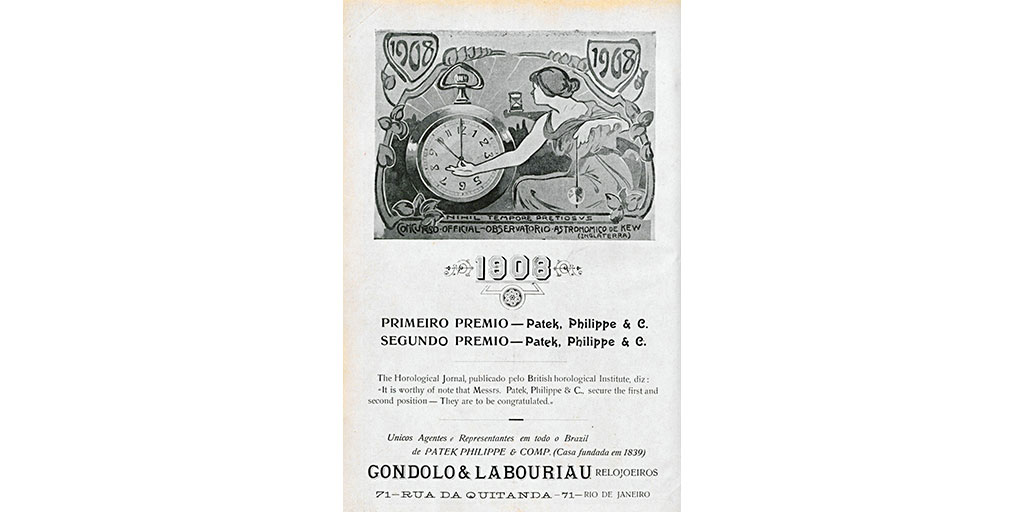In this third and final installment of the history of Patek Philippe and Gondolo & Labouriau, we learn how a perfect storm of the global financial downturn and internal mismanagement led to the eventual collapse of the prestigious Brazilian retailer, and the closing of its iconic doors on May 18th, 1935.
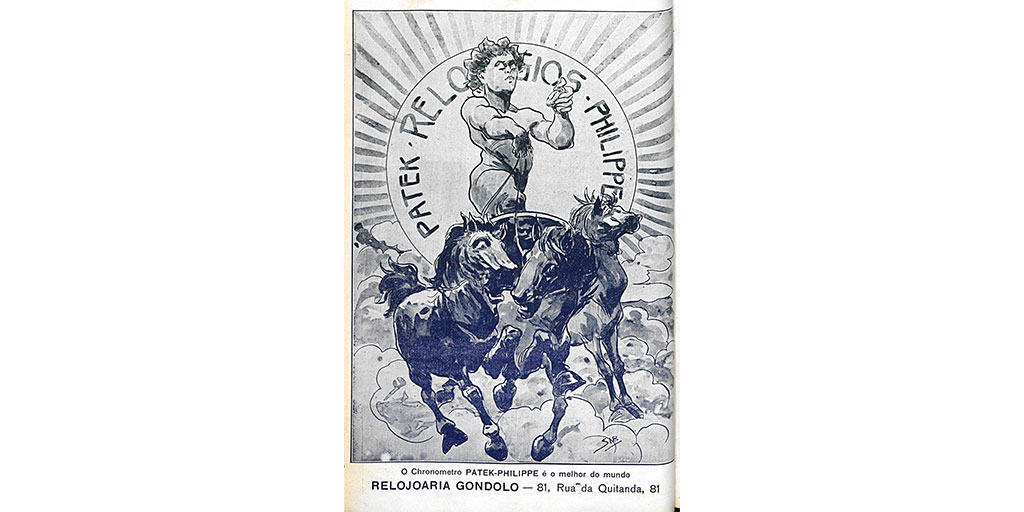
Under the management of its new majority shareholder, Guilherme João Decourt, Gondolo & Labouriau survived the post-World War I era quite well. Guilherme Decourt was a long-time employee of Gondolo & Labouriau who entered the company in 1910 and had climbed in the ranks over the years due to his trustworthiness and impeccable cooperation.
The ensuing roaring twenties introduced the mass production of goods and signaled tough years ahead for exclusive, luxury products. Rio de Janeiro had just endured the deadly effects of the Spanish Flu when a succession of crises started to form on the horizon.
For decades, Brazil had been over-dependent on its vast coffee, sugar, rubber and cotton exports. However, this staggering success led to a neglect of domestic consumption, forcing the country to import almost everything else. Then, a wave of general strikes weakened the country’s economy, only to be succeeded by the strong global effects of the Depression of 1920-1921 in the United States, a direct result of the strains of World War I. When in 1922, Arthur da Silva Bernardes was elected President of Brazil, he inherited a military rebellion led by a class of lower-ranked officers. He would serve until 1926 under a state of siege during most of his term.
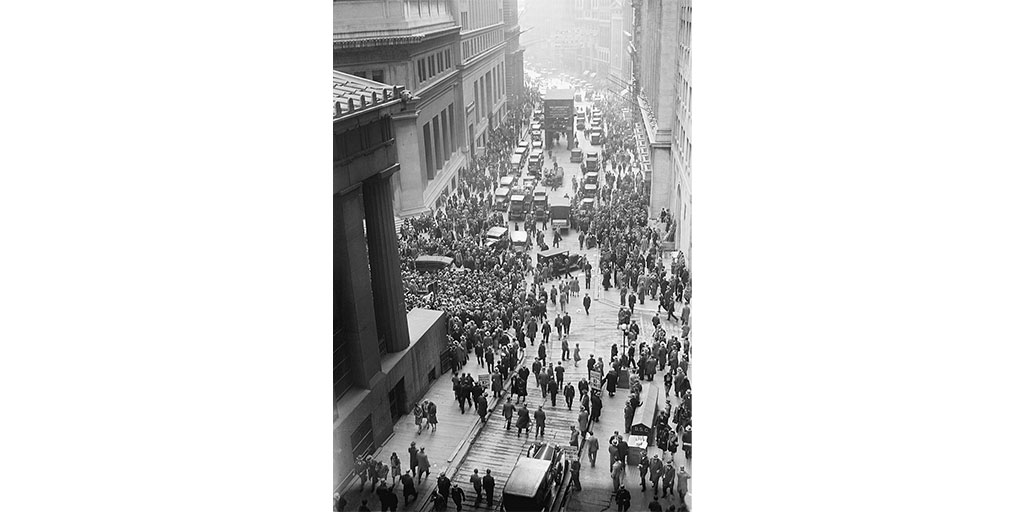
By the end of the decade, every major economy in the world had regained its strength, incapable of anticipating another major storm ahead. However, in October 1929, the stock market collapsed on Wall Street, sending successive shock waves around the globe. Although the United States and Germany were the epicenters of this economic and social crisis, Brazil was also enormously affected. As coffee suffered a severe decline in world demand, it resulted in the excess capacity of Brazil’s producers. As a result, the price of coffee fell sharply. It remained low, causing Brazil’s trade to deteriorate significantly, worsened still by large foreign debt that had accumulated over the previous years. The ensuing general unrest led to a revolution in 1930, which abolished the Old Republic.
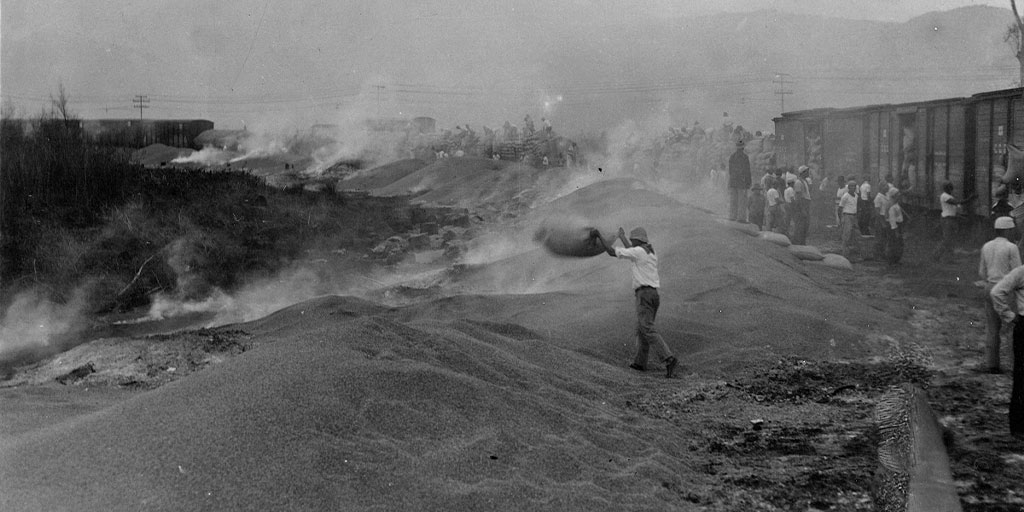
On the other side of the Atlantic, Switzerland saw a drop in exports of its watchmaking and machine industries by a staggering 59%, shaking the foundations of its production system. By 1932 its industrial output, net national income and net national product, had hit their lowest point. The fixed exchange rates of the gold standard, by which all major central banks abided, was responsible for the general free fall of prices. Additionally, and as most countries on the gold standard devalued before Switzerland did, the Swiss economy suffered from a substantial decline in the exchange rate of the Swiss franc. Exports of watches suffered.
Consequently, Patek Philippe found itself in dire straits and sought assistance from one of its faithful leading suppliers, the dial makers Stern Frères. By 1932, Charles and Jean Stern had acquired the manufacture saving it from succumbing to the ongoing national and international crisis. The delivery of the Graves Supercomplication on January 19th, 1933, for the enormous sum of 60,000 francs (15,000 USD in 1933), helped further stabilize the then 94-year-old watchmaking company.

On February 9th, 1933, at 8:00 am in the morning, Paulo Henrique Gondolo Labouriau fell victim to a heart attack, aged only 69. His body left the mansion at 71, Rua Visconde de Paraguaná at 9 o’clock the following day, heading directly to the cemetery of S. Francisco Xavier.
The downfall
In Rio de Janeiro, things started to deteriorate for Gondolo, Labouriau & Decourt. In the final months of 1934 and through the beginning of the following year, a growing number of customers began to complain about unacceptably long delays on the repair of the watches they had entrusted to the prestigious retailer. On May 18th, 1935, the shocking news to all but a few was that Guilherme Decourt, the main shareholder of Gondolo, Labouriau & Decourt, had allegedly tried to commit suicide.
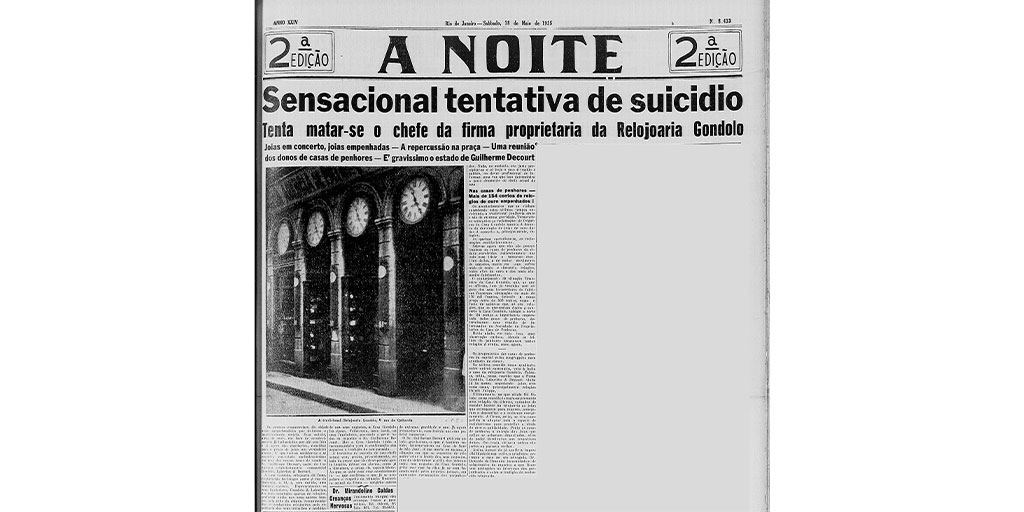
A few months before the passing of Paulo Gondolo, several lawsuits had been surfacing exposing personal financial issues by the founder of Gondolo & Labouriau, and that may well have led to his premature passing. Even after his death, the lawsuits continued to surface, now targeting his widow, Carlota Gondolo Labouriau, and subsisting at least until 1939.
Upon his death, the debts were charged directly to Gondolo, Labouriau & Decourt and immediately liquidated even without direct proof of their veracity to protect the prestige and name of the firm and its founder. This ruinous strategy would ultimately signal Decourt’s downfall.
The rumors, the problems with the repairs, and the alleged suicide attempt by Guilherme Decourt led to customer panic that also affected other retailers in the watch and jewelry business in Rio de Janeiro. Placed under medical observation at the Clinic of “São José”, the possibility of his passing gave rise to significant worries regarding the continuation of Gondolo, Labouriau & Decourt’s business.
During the days that followed Decourt’s hospitalization, information surfaced regarding the involvement of many of the city’s most important pawnshops. One, in particular, had accumulated well over one hundred and fifty watches by the best watchmakers in its safe, most of them Patek Philippe timepieces, and belonging to the customers of Gondolo, Labouriau & Decourt. The pawnshops had collectively lent the firm around 154.000$000 rs (14,000 USD in 1935, around 290,000 USD today) for these valuables.
Meanwhile, customers were strongly demanding the return of their repairs. Prior to falling ill, Decourt had to frequently request pawnshops for the return of watches, leaving new ones in their place or just writing a receipt. Inevitably, the situation had long run out of everybody’s control.
It was rumored that Gondolo, Labouriau & Decourt owed at least 500.000$000 rs (43,000 USD, around 900,000 USD today) to several Banks in Rio de Janeiro and São Paulo. To its European watch suppliers, an excess of 170,000 francs (185,000 USD in 1935, around 3.9 million USD today) was long overdue, the most significant share falling to the credit of Patek Philippe.
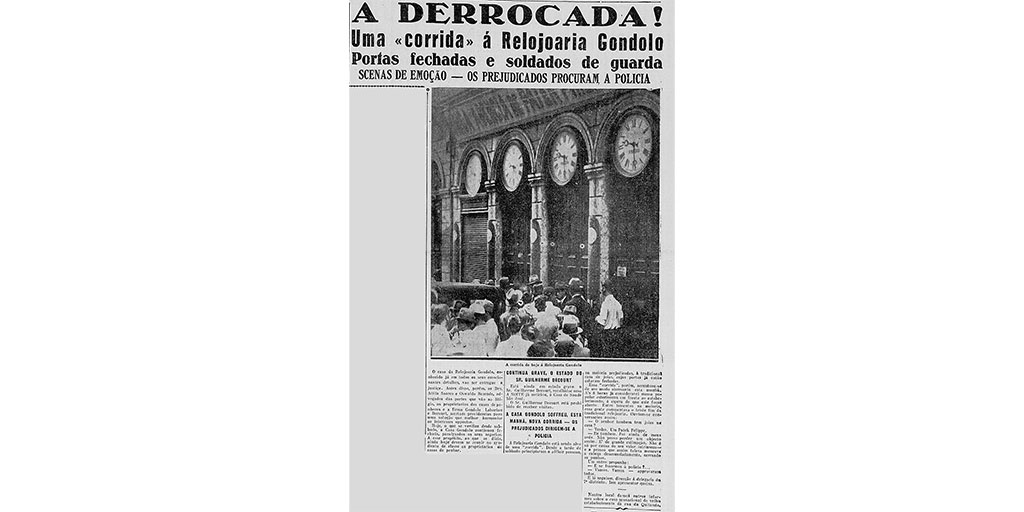
After closing at 11:30 am for the usual lunch break on Saturday afternoon of May 18th 1935, the tall doors surmounted by large clocks indicating the different time zones in the world’s major capitals would not open to the public again. Hundreds of people gathered along the narrow street in front of the shop, many loudly claiming the return of the precious Patek Philippe watch they had inherited from their grandparents.
The 7th Police District of Rio de Janeiro started to receive the first official complaints the following morning, many by very recognizable names of the Brazilian financial and political elite. The story began to unfold more clearly, and news that the first recorded pawn of a Patek Philippe watch dated from 1932 confirmed statements by employees that attributed to the origin of the situation to the time Paulo Labouriau managed the company. Decourt had tried to address the problem to protect the company’s name but had been overwhelmed by the size of the financial situation aided by the ongoing national and international crisis that had started it. Over the following days, the 7th precinct recorded the existence of 396 pawn tickets issued by fifteen different agencies for a total value of 153.487$800 rs (14,000 USD in 1935, around 290,000 USD today). Fortunately, only sixteen watches were listed as lost having been auctioned by the pawnshops. Nine belonged to Gondolo, Labouriau & Decourt and six to customers.
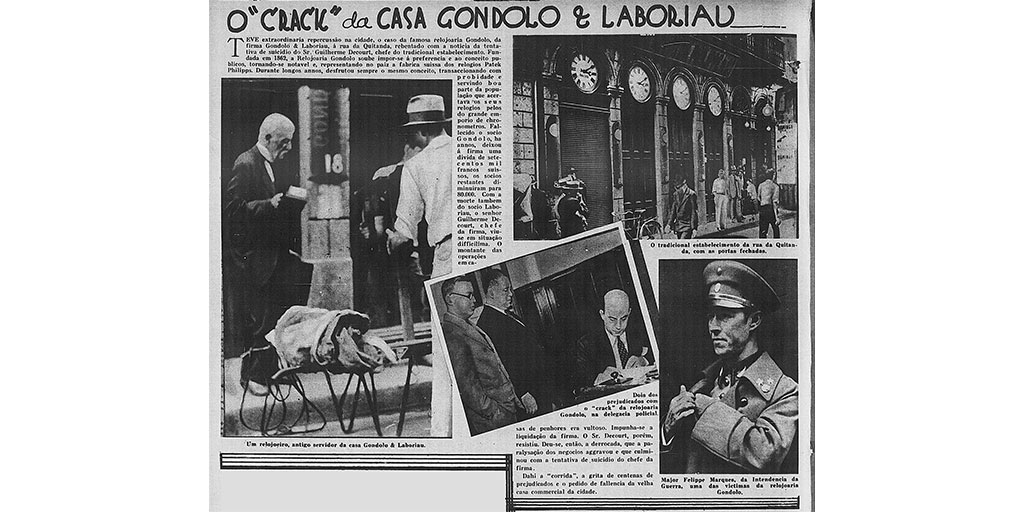
However, surprisingly most customers pitied the fall of a veritable historical institution of Rio de Janeiro that they had grown with, and that was a trusted pillar of its society. The police now stood guard in front of its closed doors over which the iconic and oversized clocks kept ticking. The last “Club Patek Philippe” had stopped in its 64th week, just 15 weeks short of its completion. Members had joined the crowd with their paid installment notes raised well above their heads.
Although only announced on May 18th, Decourt had already been seriously ill since May 7th, forcing its senior employee, Mr. Alfredo Avilez, to take over as interim manager. After desperately trying to negotiate with the pawnshops for days, he finally understood that the problem was beyond any resolution by Friday. Closing the establishment’s doors that Saturday morning was the only sound decision he could take, immediately handing the keys over to the Decourt family.
Other stories surfaced regarding the present state of Gondolo, Labouriau & Decourt, and some of them pointed directly to Carlo Gondolo. Having made a fortune during the golden years, he invested heavily in real estate and the luxurious lifestyle he surrounded himself and his family. Some said he never sent any money to Patek Philippe, and it was Paul Labouriau that, upon his partner’s death, discovered a debt of 700,000 francs owed to the Swiss watchmaker (644,000 USD in 1935, around 13.2 million USD today). With his new partner Guilherme Decourt, Labouriau managed to reduce the enormous amount to 80,000 francs (73,600 USD in 1935, around 1.5 million USD today).
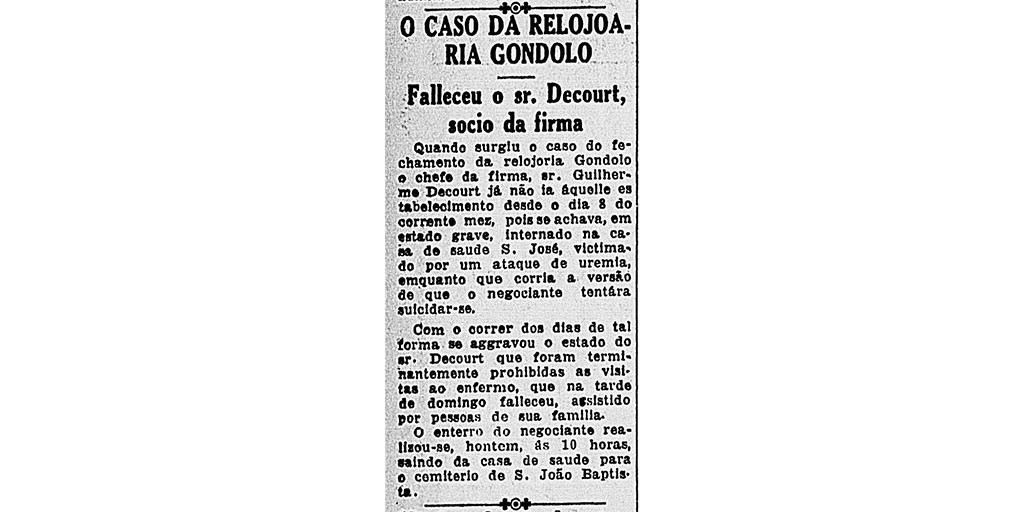
While lying unconscious in the hospital bed and without knowing the turmoil raging around him, Decourt’s health still failed rapidly. On May 24th, 1935, at four in the afternoon, he finally drew his last breath, and was buried the following morning in the cemetery of “São João Baptista”. The cause of death, duly confirmed by Dr Oscar Clark, was advanced uremia and atherosclerosis, excluding the suicide attempt theory that was on everybody’s mind.
The bankruptcy of Gondolo, Labouriau & Decourt would finally be requested on June 7th, 1935 by a single private complainant, and decreed by the court judge five days later. No bank or financial institution had made the first step to sue the company. The venerable establishment’s special license to organize its famed “Clubs Patek Philippe” was revoked on the 28th. It was initially issued on May 22, 1911.
The saga of Gondolo, Labouriau & Decourt had come to an end. The city had lost its most iconic and prestigious watch retailer, but not Patek Philippe. Its history and love affair with the “Marvelous City” of Rio de Janeiro would go on, as would the memory of the unique and remarkable “Chronometro Gondolo” adventure.
Collectability would like to sincerely thank Carlos Torres for his relentless, in-depth research into the history of Gondolo & Labouriau. Over many months of investigative research, he has unearthed new academics on the history of the Brazilian retailer which have never been published before. Collectability is honored to exclusively publish his findings for the first time here.

